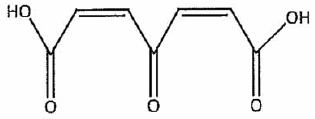The mica cap, Coprinellus micaceus (Bull.) Vilgalys.
Classification
Kingdom Fungi
Phylum Basidiomycota
Class Basidiomycetes
Order Agaricales
Family Agaricaceae
Genus Coprinellus
Synonyms
Agaricus congregatus sensu Sowerby
[Col. Fig. Engl. Fung. Vol. 3, pl. 261 (1800)]
fide Checklist of Basidiomycota of Great Britain and Ireland (2005)
Agaricus micaceus Bull.
Herbier de la France 6: tab. 246 (1786)
Coprinus micaceus (Bull.) Fr.
Epicr. syst. mycol. (Upsaliae): 247 (1838) [1836]
Common names
Glistening Coprinus
Mica cap
Brownie mushroom
Coprin micacé (French)
Glimmer-Tintling (German)
Gewone glimmerinktzwam (Dutch)
Description
Cap: 2-4 cm diameter, oval to campanulate, later expanding to broadly convex, margin upturned in age; color variable from tawny brown, reddish brown, to ochre brown, fading with age and becoming grayish near the margin; hygrophanous; surface striate, initially covered with glistening particles that easily wash or wear off; margin prominently lined nearly to the center; flesh thin fragile, pale brown.
Gills: adnexed or free, close, white when young, then purplish-brown to black, eventually deliquescing; 3-8 mm broad.
Stem: 3-10 cm x 2-6 mm, white, pruinose, equal or with base clavate or bulbous, often with a volva-like margin; hollow, fragile
Spores: 6.5-10.0 x 4.5-7.0 x 4.5-5.5 µm, ellipsoid or ovoid with conical base (mitriform) and truncate apex, brown.
Spore print: black.
Taste: mild, pleasant.
Edibility: edible before the gills deliquesce.
Habitat: fasciculate or gregarious around dead trunks or stumps, on lawns and along sidewalks and streets; saprobic; spring-fall; common. Stewart (1926) claims to have gathered 38 pounds from a single large elm stump in one season (between May 1 and October 1, combining 8-10 successive crops).
An old reference (Stewart, 1926) mentions that autodigestion results in 72-74% of the weight of the caps transforming into liquid. This liquid, when pure, is light reddish brown, but usually appears black, due to the admixture of spores and particles of undigested residue. Another ancient report (Pady, 1941) mentions that 5-7 days are required for the mushroom to reach maturity – at least when growing in the crack of a hardwood floor!

My name is Austin Collins.
I've dedicated my life to Mushrooms.
I believe Mushrooms are the best kept secret when it comes to health and well being.
For that reason, I would like to share a company with you that in my opinion makes the best mushroom products on the market.
The company is called Noomadic Herbals, my favorite supplement they make is called "Mushroom Total".
I take their products every day and they have helped me think better and have more energy. Give them a try.
-Austin
Bioactive compounds
Two novel compounds have been isolated from the methanolic extract of C. micaceus, micaceol (a sterol), and (Z,Z)-4-oxo-2,5-heptadienedioic acid. The latter compound, present at a concentration of 32 µg/mL, inhibited the enzyme glutathione S-transferase (GST) by 26.8% (Zahid et al., 2006). GST has been implicated in the resistance of cancer cells against chemotherapeutic agents, and GST inhibitors have the potential to be used as adjuvants in cancer chemotherapy.


Medicinal properties
Antitumor effects
Polysaccharides extracted from the mycelial culture of C. micaceus and administered intraperitoneally into white mice at a dosage of 300 mg/kg inhibited the growth of Sarcoma 180 and Ehrlich solid cancers by 70% and 80%, respectively (Ohtsuka et al., 1973).
The antioxidant activity of cultured liquid, mycelial extract and biomass suspension from cultures of C. micaceus have been shown to have antioxidative potential to inhibit the reaction of free-radical peroxide oxidation of lipids in rat brain homogenate (Badalyan, 2003).
The antimicrobial activity of various species of the genus Coprinus, including 2 strains of C. micaceus (VKM F-2945 and VKM F-2946) were evaluated against Bacillus subtilis AONN 6633, B. mycoides 537, B. pumilis NCTC 8241, Leuconostoc mesenteroides VKPM B-4177, Micrococcus luteus NCTC 8340, Staphylococcus aureus FDA 209P, INA 00761, INA 00762, Escherichia coli ATCC 25922, Comamonas terrigena ATCC 8461, Pseudomonas aeruginosa ATCC 27853, Aspergillus niger INA 00760, Saccharomyces cerevisiae RIA 259, and Candida albicans INA 00763 (Efremenkova 2003).
The compound micaceol (described above) has demonstrated modest anti-bacterial activity against Corynebacterium xerosis and Staphylococcus aureus, with minimal inhibitory concentration (MIC) values of 82.35 and 146 µg/mL, respectively (Zahid et al., 2006).
Links
Mushroom Expert
California Fungi
Fungi on Wood
References
Badalyan SM.
Edible and medicinal Higher Basidiomycetes mushrooms as a source of natural antioxidants.
Int J Medi Mushrm. 2003 5(2):153-162.
Dursun N, Ozcan MM, Kasik G, Ozturk C.
Mineral contents of 34 species of edible mushrooms growing wild in Turkey.
J Sci Food Agric. 2006 86(7):1087-94.
Efremenkova OV, Ershova EY, Tolstych IV, Dudnik YV.
Antimicrobial activity of medicinal mushrooms from the genus Coprinus (Fr.) S. F. Gray (Agaricomycetideae).
Int J Medi Mushrm. 2003 5(1):37-41.
Ohtsuka S, Ueno S, Yoshikumi C, Hirose F, Ohmura Y, Wada T, Fujii T, Takahashi E.
Polysaccharides having an anticarcinogenic effect and a method of producing them from species of Basidiomycetes.
UK Patent 1331513, 26 September 1973.
Pady SM.
Notes on Coprinus micaceus growing in an unusual habitat.
Mycologia. 1941 33(4):411-4.
View 1st page
Reid DA, Thomas A.
Observations on the fruiting of a mycelium of Coprinus micaceus.
Bull Br Mycol Soc. 1981 15(1):57-8.
Stewart FC.
The mica ink-cap or glistening Coprinus.
New York [Geneva] Agric Exp Sta Bull. 1926 535:1-30.
Zahid S, Udenigwe CC, Ata A, Eze MO, Segstro EP, Holloway P.
New bioactive natural products from Coprinus micaceus.
Nat Prod Res. 2006 20(14):1283-9.



